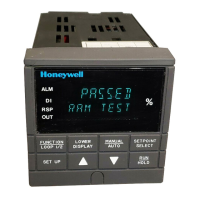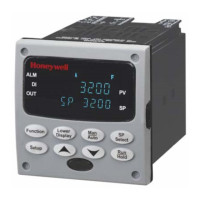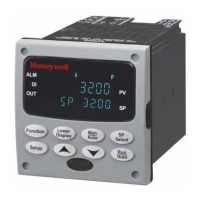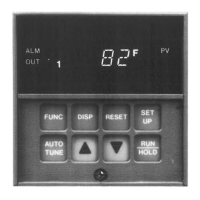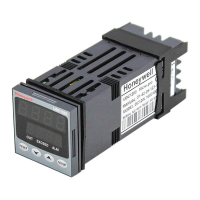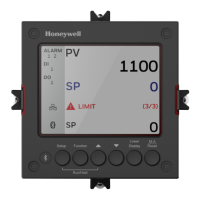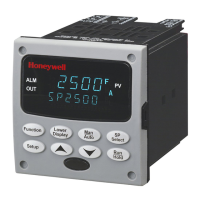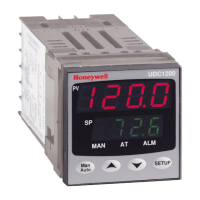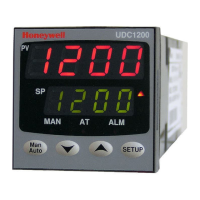Monitoring and Operating the Controller
238 UDC3500 Universal Digital Controller Product Manual 3/07
4.22 Three Position Step Control Algorithm
Introduction
The Three Position Step Control (TPSC) algorithm allows the control of a valve (or other
actuator) with an electric motor driven by two controller output relays; one to move the
motor upscale, the other to move it downscale, without a feedback slidewire linked to the
motor shaft.
Estimated Motor Position
The Three Position Step control algorithm provides an output display, which is an
estimated motor position since there is no slidewire feedback.
• Although this output indication is only accurate to a few percent, it is corrected each
time the controller drives the motor to one of its stops (0 % or 100 %).
• It avoids all the control problems associated with the feedback slidewire (wear, dirt,
and noise).
• When operating in this algorithm, the output display is shown to the nearest percent
(that is, no decimal).
The Motor Travel Time (the time it takes the motor to travel from 0 % to 100 %) must be
configured in order for TPSC to operate correctly. See Section 3.14.
Motor Position Display
Table 4-26 Procedure for Displaying TPSC Motor Position
Step Operation Press Result
1
Access the
Displays
Lower
Display
Until you see:
Upper Display = PV
Lower Display = OT (The estimated motor position in %)
Accurate Motor Position
In the event that an accurate and repeatable indication of motor position is required, the
instrument’s Third Analog Input may be used to read the motor’s slidewire. The Third
Analog Input must be configured for slidewire operation. Motor position is then shown
on the lower display as POS XX.X. The TPSC algorithm does not use this value; it is
only used for display purposes.
The slidewire must be calibrated for this display to operate correctly. See Section 6.5.

